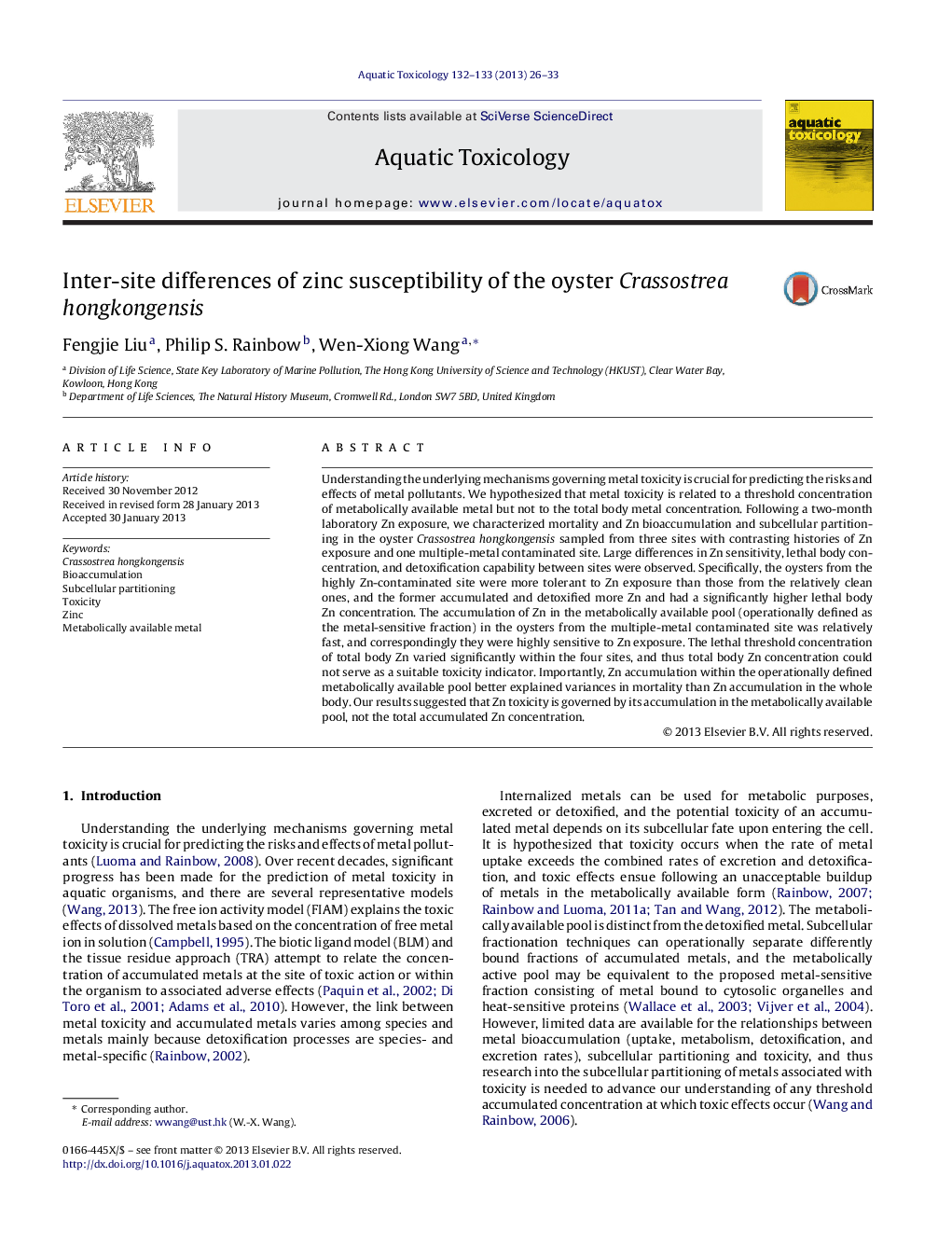| Article ID | Journal | Published Year | Pages | File Type |
|---|---|---|---|---|
| 4529481 | Aquatic Toxicology | 2013 | 8 Pages |
Understanding the underlying mechanisms governing metal toxicity is crucial for predicting the risks and effects of metal pollutants. We hypothesized that metal toxicity is related to a threshold concentration of metabolically available metal but not to the total body metal concentration. Following a two-month laboratory Zn exposure, we characterized mortality and Zn bioaccumulation and subcellular partitioning in the oyster Crassostrea hongkongensis sampled from three sites with contrasting histories of Zn exposure and one multiple-metal contaminated site. Large differences in Zn sensitivity, lethal body concentration, and detoxification capability between sites were observed. Specifically, the oysters from the highly Zn-contaminated site were more tolerant to Zn exposure than those from the relatively clean ones, and the former accumulated and detoxified more Zn and had a significantly higher lethal body Zn concentration. The accumulation of Zn in the metabolically available pool (operationally defined as the metal-sensitive fraction) in the oysters from the multiple-metal contaminated site was relatively fast, and correspondingly they were highly sensitive to Zn exposure. The lethal threshold concentration of total body Zn varied significantly within the four sites, and thus total body Zn concentration could not serve as a suitable toxicity indicator. Importantly, Zn accumulation within the operationally defined metabolically available pool better explained variances in mortality than Zn accumulation in the whole body. Our results suggested that Zn toxicity is governed by its accumulation in the metabolically available pool, not the total accumulated Zn concentration.
► Zn sensitivity and detoxification in oysters are related to the history of metal exposure. ► The lethal threshold concentration of total body Zn varied significantly among oyster populations. ► Total body Zn concentration could not serve as a suitable toxicity indicator in oysters. ► Zn toxicity is related to a threshold concentration of metabolically available metal.
